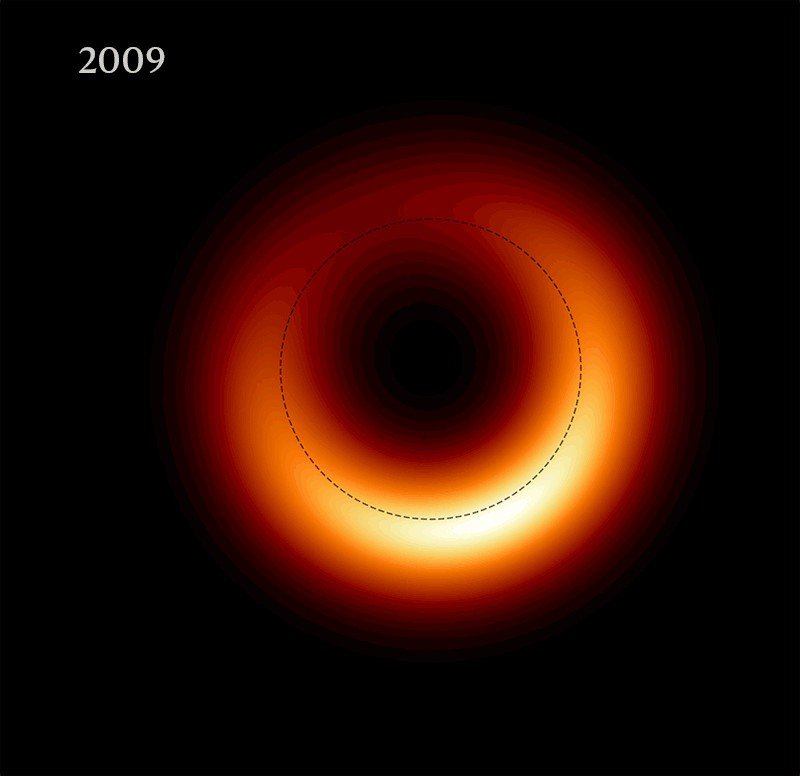Astronomers have managed to produce several snapshots of the activity of the M87 black hole photographed last year. The opportunity to appreciate the evolution of his "ring of light".
In April 2019, researchers from the Event Horizon Telescope (EHT) project unveiled a historic photo:that of a black black hole 6.5 billion times more massive than the sun positioned in the heart of the galaxy M87, about 53 million light-years away . This breathtaking photo had more precisely revealed the shadow of the black hole to us (it is impossible to photograph the interior of these objects from the outside).
Surrounding this cosmic ogre, inside which our Solar System could fit, was also wrapped a ring of radiation emitted by fast-moving superheated gas. As the shared image (visible in the header) shows us, this ring appears much brighter on its "lower" half, drawing a crescent shape.
To produce this image, the researchers combined data from eight radio telescopes around the world . Using a technique called Very Long Baseline Interferometry (or VLBI), instruments from all of these observatories were linked together to form a single, Earth-sized "virtual telescope".
That said, this historical view was just a snapshot of M87* (the name of the black hole) as the EHT had observed it for a week in April 2017. More recently, Maciek Wielgus, a radio astronomer at Harvard University in Cambridge (Massachusetts), sought to find out what M87* looked like in previous years.
The snapshot shared in 2019 was modeled from large amounts of data that was not available in previous years. Also, Wielgus and his team improved these observations by combining them with mathematical models. Using this approach, they were finally able to fairly faithfully reconstruct several snapshots of the black hole between 2009 and 2017 . This gives us this:

It's obviously not the movie of the year, but its implications for science are worth it. Published in The Astrophysical Journal , this work reveals in particular that the luminous ring of M87* oscillates in time . Other snapshots will also be captured over the next few years in order to better understand the activity of this black hole.
Note that the project only collects this data during a brief open window, between March and April . Unfortunately, this year's sightings were not possible due to the coronavirus pandemic. However, the EHT team plans to come back strong in 2021 with a reinforced array of eleven telescopes . However, the more telescopes there are in the game, the better the resolution of the images. Also in four or five years, we might finally be able to enjoy much smoother video of this black hole.